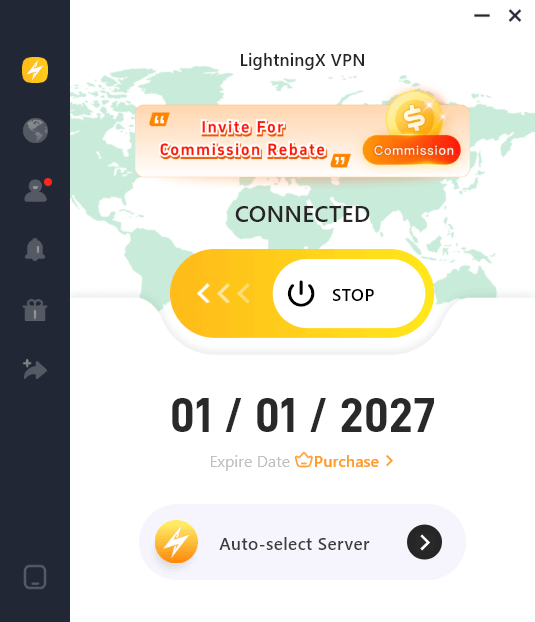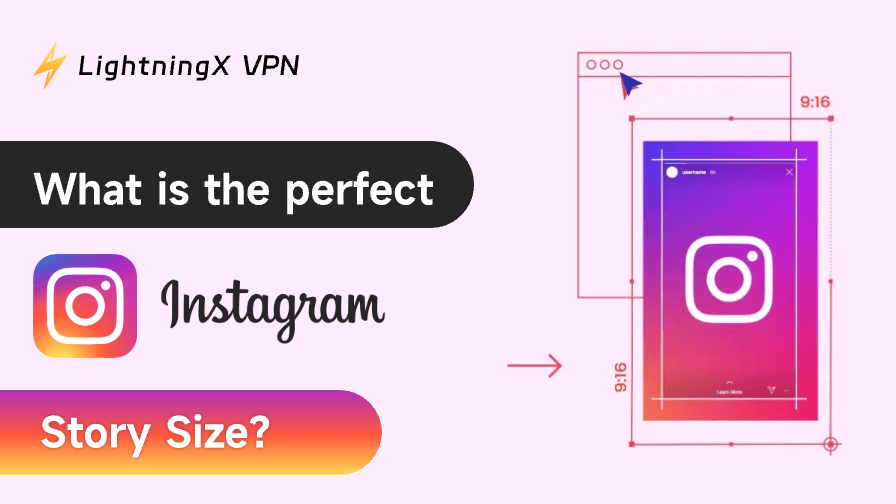If your content appears blurry, cropped, or off-center, chances are viewers will tap away before your message even reaches them. This quick guide covers everything you need to know about Instagram Story size, along with practical design tips and upload tools to help your Stories stand out and not get skipped.
What Size Is an Instagram Story?
When people talk about Instagram Story “size,” they’re usually referring to the image or video’s pixel dimensions and aspect ratio. In other words, the shape and resolution that fit Instagram’s full-screen, vertical layout.
Stories are designed with smartphones in mind, which means a tall, 9:16 format is the default. If your content doesn’t match that frame, Instagram will either crop it or fill the gaps, often in ways you didn’t intend.
- Standard dimensions: 1080 pixels (width) × 1920 pixels (height)
- Aspect ratio: 9:16
This means any image or video uploaded to a Story should ideally follow this 9:16 ratio to fully fill the screen. If your content is smaller or in a different shape, say, a square (1:1) or landscape (16:9), Instagram may automatically crop or add black borders to fit it into the Story frame.
In practical terms, “Story size” or “Story dimensions” make sure your content is displayed the way you intended, without important parts getting cut off or resized awkwardly.
If you’ve followed all the size rules and your Story still looks weird, it might not be your fault – Instagram not working could be the issue.
How to Post an Instagram Story in the Ideal Size?
Step 1: Create Your Content in the Right Dimensions
Design your photo or video in a 9:16 aspect ratio, which is the standard for Instagram Stories. The recommended size is 1080 x 1920 pixels. Most editing apps like Canva, Adobe Express, or CapCut offer templates specifically for this format.
Step 2: Transfer the File to Your Phone (If Needed)
If you’re designing on a computer, export your content in high quality (preferably .jpg for images, .mp4 for videos) and send it to your mobile device without compression – AirDrop, Google Drive, or similar services work well.
Step 3: Open the Instagram Story Interface
Launch Instagram and either swipe right from your main feed or tap the “+” icon on your profile, then select “Story.”
Step 4: Select or Capture Your Content
Choose your pre-sized photo/video from the gallery or shoot something live. If the file follows the 9:16 ratio, Instagram won’t crop or add borders.
Step 5: Check the Safe Zones
Before posting, preview the layout. Make sure no important elements (text, faces, logos) sit too close to the top (profile bar) or bottom (chat and send buttons), which may overlap your content on some devices.
Step 6: Add Finishing Touches (Optional)
You can still use Instagram’s built-in features to add stickers, GIFs, text, or filters. Just remember that over-styling might reduce visual clarity, especially on smaller screens.
Step 7: Publish
Once you’re happy with the result, tap “Your Story” or “Close Friends” to share it.
Even if you’re using the right dimensions (like 1080 × 1920), your Story might still look pixelated.
In that case, it could be due to your phone’s local cache interfering with how Instagram compresses or displays content.
Clearing the Instagram cache might help reset things and improve quality.
What Good Stories Get Right: Real-World IG Design Practices
You can tell when an Instagram Story just works. It doesn’t just fit the screen; it feels intentional. The colors click, the text doesn’t fight for space, and everything flows like it was made to be there. That’s no accident. Great Stories follow a few grounded design practices that consistently pay off, especially when you’re creating for a fast-scrolling audience.
Here’s what they get right and how you can, too:
Keep the Focus Centered (Literally and Visually)
Your phone screen has a natural “safe zone,” usually the center third vertically and horizontally. Good designers avoid placing key elements, like faces, text, or calls-to-action, too close to the edges. That way, nothing important gets cropped by Instagram’s UI or a viewer’s thumb.
Text Hierarchy Is Everything
You don’t need ten fonts or flashing GIFs to stand out. Most compelling Stories use a simple visual hierarchy: a bold header to grab attention, a brief subtext to add clarity, and maybe a supporting label if necessary. Align consistently, and don’t underestimate white space. It’s your best friend for making content readable at a glance.
Motion, But with Purpose
Yes, Stories support animations, but just because something can move doesn’t mean it should. Effective use of motion draws attention without overwhelming the message. For instance, having text fade in subtly can work wonders, while chaotic stickers might just distract.
Branding Without Screaming
Whether you’re a creator or a business, the best Stories embed identity without overdoing it. Think: consistent use of a brand color, a recurring typeface, or a particular filter, not a logo slapped in every corner.
Use the Whole Frame, But Intentionally
Vertical space is precious. Smart designs use layering, like foreground, midground, background, without cluttering. Full-screen images work great, but so do Stories that play with negative space to lead the eye. Leave breathing room, even when you’re tempted to fill every inch.
Related Tips for Content Creators:
- Use editing tools like Canva or CapCut to streamline sizing.
- Try uploading over a stable, private network for best results.
- Use LightningX VPN with fast and encrypted connections.

LightningX VPN keeps your uploads fast and uninterrupted, even when you’re on public Wi-Fi or switching between locations. It routes your traffic through high-performance servers (2000+ nodes worldwide) optimized for media sharing, so uploading high-res Instagram Stories won’t choke your connection or fail mid-post.
All data is protected with AES-256 encryption, the same level used by banks and security agencies, so your content stays private, and your uploads remain uninterrupted.
Why Are Instagram Story Dimensions Crucial?
Story content is all about momentum. A viewer taps through in seconds, and if your visuals don’t look sharp or well-aligned, they’ll keep swiping. Correct dimensions help your content feel seamless rather than an afterthought.
More importantly, Instagram’s algorithm favors native-feeling content. Stories that display cleanly and load properly tend to perform better, not because of some magic formula, but because they keep users engaged longer. If a Story lags, looks off-center, or gets cropped in weird places, the experience breaks, and so does your chance to convert.
Think of it this way: well-dimensioned content isn’t just prettier, it’s trust-building. It signals that you know the platform and respect your viewers’ time. And in a feed full of distractions, that clarity gives you an edge.
Note: Instagram Stories are designed to be immersive and often encourage spontaneous reactions or even screenshots.
Related: Does Instagram Notify When You Screenshot: Post, Story & DMs
FAQs – Instagram Story Size
Q: What is the ideal Instagram Story size in 2026?
The optimal size remains 1080 × 1920 pixels, with a 9:16 aspect ratio. This format fits perfectly on most smartphone screens and avoids unwanted cropping or compression.
Q: Does file size affect Story quality?
It can. Instagram compresses large files, which may reduce image or video quality. Try to keep videos under 4MB and photos under 1MB while maintaining resolution.
Q: Will Instagram compress my Story even if it’s sized correctly?
Some compression may still occur, especially if your file is large. To minimize quality loss, upload content in high resolution and keep file sizes reasonable.





















